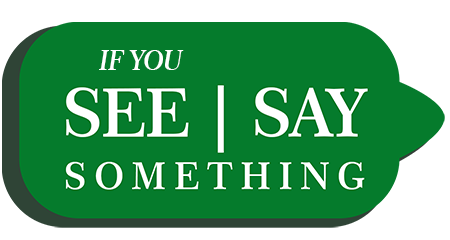KNOW THE BASICS ON THE PROHIBITED LIST
The World Anti-Doping Agency (WADA) has been publishing the List since 2004 and updates it annually following an extensive consultation process.
¨ The List comes into effective on 1st January each year.
¨ WADA to make changes to the List more than once a year and, would communicate any changes three months before they come into effect. Before the List comes into effect, WADA publishes the changes on its website so everyone has time to understand these changes. This is done on 1st October each year. It is very important that you and your team (coaches, medical professionals, parents, teammates, etc.) are aware of any changes to the List. You can check the updates on WADA’s website
¨ A substance or method ends up on the List it must meet 2 of the following 3 criteria:
- It improves sports performance or has the potential to
- It presents a risk to health
- It goes against the spirit of sports (i.e. the ethical pursuit of human excellence through the dedicated performance of each athlete’s natural talent)
¨ The List is divided into:
- substances that are prohibited at all times e.g. but not limited to: anabolic agents, peptide hormones, and diuretics and masking agents
- substances that are prohibited during the in-competition period only e.g. but are not limited to: cannabinoids, glucocorticoids, narcotics and stimulants. The in-competition period commences 11.59pm on the day before a competition, through to the end of the competition and any sample collection process.
- substances that are prohibited only within particular sports
- methods prohibited at all times such as blood transfusion or manipulation, or intravenous infusions in certain situations
- Specified Substance and Non Specified Substance:
Specified substances are those that, if found to be present in an athlete’s bodily sample, may be more likely to have a credible, non-doping explanation
Non-specified substances are those where there is no non-doping explanation for having these substances in an athlete’s system
¨ Your Responsibility As An Athlete
- You shall be responsible for knowing what constitutes an anti-doping rule violation and the substances and methods which have been included on the Prohibited List.
- You are ‘strictly liable’ (responsible) for anything found in your system, regardless of how it got there or whether you had any intention to cheat.
- Always be cautious of substances that may contain similar endings to a named prohibited substance e.g. the prohibited substance Testosterone; substances ending in ‘one’ are likely to have a similar chemical structure.
- Make sure you ask if you are unsure about a product/medication, substance or ingredient.
- If you need to use any medication for therapeutic purposes, you must apply for a Therapeutic Use Exemption (TUE) prior to using it. The NADC TUE application form can be found here TUE
Application Form - Nigeria's National Anti-Doping Committee (NADC) (nadongr.org.ng)
¨ Caution with Medications
- Medications can contain banned substances. This includes medications prescribed by a doctor or medical professional and the ones that you can buy over-the-counter in a supermarket or from a pharmacy.
- If you intend to use a medication then you must check that its ingredients do not contain any banned substances. This means all medications must be checked against the List before you take them.
- Taking a medication that contains a banned substance is a risk that you need to be aware of.
- Do not assume that if it is prescribed by a medical professional that it is safe to take. You are ultimately responsible for what is found in your system (remember the principle of strict liability).
- The Prohibited List only contains the generic names of ingredients contained in the medication
- When checking a medication against the List, look for the generic name of the active ingredient e.g. Ibuprofen instead of Advil
- The List does not contain brand names e.g. NOFEREN which may vary from country to country
- Remember, not all substances banned in sport are listed. The List says "including but not limited to..." and "or a similar chemical structure or biological effect". This means that if you take a substance that is not specifically listed but is similar to ones that are, you could still receive a positive test and consequently a ban from sport. When checking the List, if you don't find a substance or method, verify with your ADO.
If you need any advice on substances, contact the NADC
DISCOVER MORE ON THE PROHIBITED LIST
Get the FQA on the Prohibited List
For further information on the full list of modifications on the 2023 Prohibited List please consult the 2023 Summary of Major Modifications and Explanatory Notes.
WADA has also published the 2023 Monitoring Program which lists substances (not on the Prohibited List) that are currently being monitored for potential misuse.
Also, for further information on the full list of modifications on the 2024 Prohibited List please consult the 2024 List of Prohibited Substances and Methods and the 2024 Summary of Major Modifications and Explanatory Notes.
WADA has also published the 2024 Monitoring Program which lists substances (not on the Prohibited List) that will be monitored for potential misuse.
The Nigeria Anti-Doping Rules incorporate the Prohibited List as published and revised
by WADA and described in Article 4.1 of the World Anti-Doping Code


